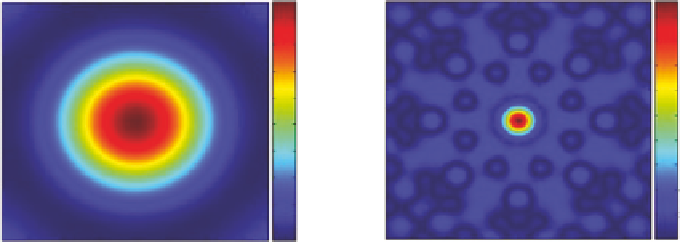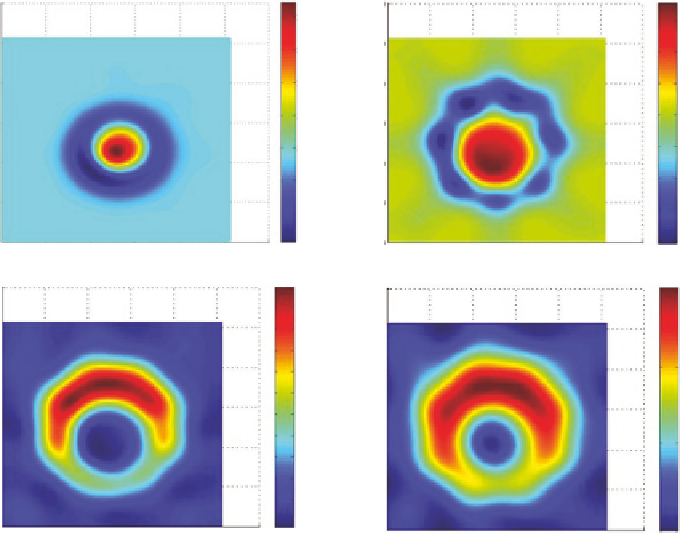Image Processing Reference
In-Depth Information
(a)
(b)
300
300
2.8
3
250
250
2.6
2.8
2.4
200
200
2.6
2.2
2.4
150
150
2
2.2
100
100
2
1.8
50
50
1.8
1.6
1.6
0
0
0
50
100
150
200
250
300
0
50
100
150
200
250
300
(c)
(d)
300
300
3
2.7
250
250
2.6
2.5
2.4
2.3
2.2
2.1
2
1.9
1.8
1.7
2.5
200
200
150
150
2
100
100
50
50
1.5
0
0
0
50
100
150
200
250
300
0
50
100
150
200
250
300
Figure 9.13
Cepstral reconstruction of FoamDielInt at various frequencies: (a) 3 GHz, (b) 7 GHz, (c) 9 GHz,
and (d) 10 GHz.
for this. The first is that inversion at lower frequencies meets conditions that
increasingly favor the validity of the first Born approximation (i.e. |
kVa
| ≪ 1)
and for this scatterer at relatively lower frequencies, the sampling rate of the
scattered field is adequate. One might also speculate that at higher frequencies,
as the effective wavelength is reduced, there may be relatively more scatter-
ing from the boundary and less penetration of the field into the target, and so,
less scattering from the higher permittivity internal features. Another impor-
tant factor is that the angular sampling of the scattered field and the number
of incident field directions are identical for all frequencies employed. One
(a)
(b)
1800
1600
1400
1200
1000
800
600
400
200
1800
1600
1400
1200
1000
800
600
400
200
-0.06
-0.06
-0.04
-0.04
-0.02
0
-0.02
0
0.02
0.02
0.04
0.06
0.04
0.06
-0.06 -0.04 -0.02
0
0.02 0.04 0.06
-0.06 -0.04 -0.02 0
0.02 0.04 0.06
Figure 9.14
Point spread functions corresponding to the locus of
k
-space scattered field coverage for the
frequencies of (a) 3 GHz and (b) 10 GHz.


Search WWH ::

Custom Search